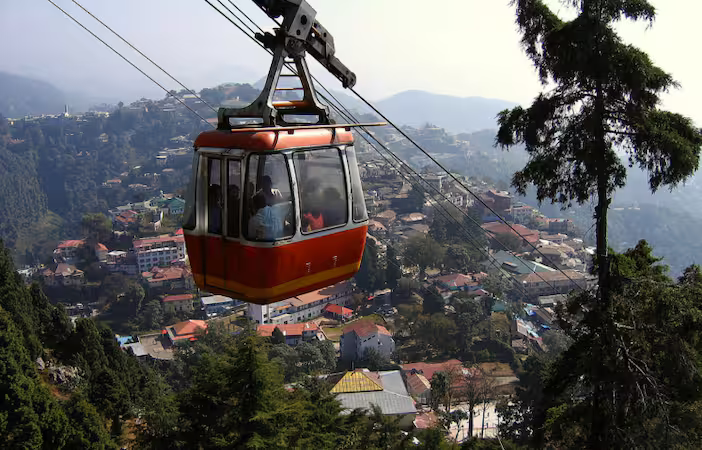
Uttarakhand, often referred to as the “Devabhumi” or “Land of the Gods,” is a state in northern India known for its stunning natural beauty, spiritual significance, and cultural heritage. It was carved out of the northern part of Uttar Pradesh on 9th November 2000 and became the 27th state of India. The state shares its borders with Tibet (China) in the north, Nepal in the east, Himachal Pradesh in the west, and Uttar Pradesh in the south.
The state is divided into two main regions—Garhwal and Kumaon—each with its own unique traditions, dialects, and customs. Dehradun serves as the capital of Uttarakhand, while Gairsain is the summer capital. With its rich biodiversity, famous pilgrimage sites, and adventure tourism, Uttarakhand is a prominent destination for both spiritual seekers and nature lovers.
Ancient History
- Mention in Hindu Scriptures:
- Uttarakhand finds mention in the Vedas, Puranas, and epics like Mahabharata and Ramayana. It is home to sacred rivers like the Ganga and Yamuna and ancient temples such as Kedarnath and Badrinath.
- The region is believed to have been the abode of sages (rishis), including Ved Vyas (author of the Mahabharata) and Adi Shankaracharya, who re-established Hinduism in the 8th century CE.
- Puranic References:
- The state was historically known as Kedarkhand, Manaskhand, and Himavant in Hindu scriptures.
- Many saints and ascetics have meditated in its serene valleys and mountains, considering it an ideal place for penance and spiritual enlightenment.
Medieval History
- Rule of Katyuri Dynasty (7th–11th Century CE):
- One of the earliest known ruling dynasties of Uttarakhand, the Katyuri kings ruled over the Kumaon and Garhwal regions.
- Their capital was Baijnath, and they built several temples, many of which still stand today.
- Chand Dynasty (11th–18th Century CE):
- The Chand dynasty succeeded the Katyuris in Kumaon and played a significant role in the region’s cultural development.
- They established Almora as their capital in 1563 CE and built several temples, including the famous Jageshwar temple complex.
- Garhwal Kingdom & Panwar Dynasty:
- In Garhwal, the Panwar (Parmara) dynasty ruled for several centuries.
- King Ajay Pal (14th century CE) unified the small principalities of Garhwal into one strong kingdom.
Colonial Period (British Rule)
- Gurkha Invasion & Anglo-Gurkha War (18th-19th Century):
- In the late 18th century, the Gorkhas from Nepal invaded Uttarakhand and ruled over the region for around 25 years.
- In 1815, the British defeated the Gurkhas in the Anglo-Gurkha War, and the region came under British control.
- British Rule & Development:
- The British made Nainital their summer capital due to its cool climate.
- British rule led to the development of tea plantations, roads, railways, and hill stations in Uttarakhand.
- The forests of Uttarakhand were exploited for timber, leading to ecological concerns.
Modern History & State Formation
- Participation in Freedom Struggle:
- Uttarakhand contributed to India’s freedom movement, with several freedom fighters, including Chandrashekhar Azad, finding shelter in the hills.
- The people of the region actively participated in movements like the Non-Cooperation Movement and Quit India Movement.
- Formation of Uttarakhand (2000):
- After decades of struggle and protests by the people demanding a separate state, Uttarakhand was formed on 9th November 2000.
- The demand for statehood was driven by factors like cultural identity, economic backwardness, and geographic uniqueness.
Geography & Climate
- Mountainous Terrain: About 86% of Uttarakhand is mountainous, with major peaks like Nanda Devi (7,816 m).
- Rivers & Glaciers: It is the origin of the Ganga (Gangotri Glacier) and Yamuna (Yamunotri Glacier).
- Forests & Biodiversity: Home to Jim Corbett National Park, Valley of Flowers, and Rajaji National Park.
- Climate: Ranges from temperate in the hills to subtropical in the plains.
Culture & Tourism
Pilgrimage Sites (Char Dham Yatra)
- Badrinath (Vishnu Temple)
- Kedarnath (Shiva Temple)
- Gangotri (Source of the Ganga)
- Yamunotri (Source of the Yamuna)
Popular Hill Stations & Adventure Tourism
- Nainital, Mussoorie, Auli, Chopta, Ranikhet, Kausani
- Trekking, River Rafting, Paragliding, Skiing
Fairs & Festivals
- Kumbh Mela (Haridwar)
- Ganga Dussehra
- Nanda Devi Raj Jat Yatra
Uttarakhand is a land of spiritual importance, rich history, and breathtaking landscapes. Whether it’s the holy shrines, the majestic Himalayas, or the vibrant cultural traditions, the state offers something for every traveler, historian, and spiritual seeker.
INDIAINNINGS
Campaigns
- Diwali Special
- Independence Day Celebrations
- Holiday on Holi day
- New Year Specials
Help
- Order Tracking
- Terms & Conditions
- Privacy Policy
- Tutorials
- FAQ
Help
- Facebook Chat
- Whatsapp Help
- E-mail Support
- Contact

